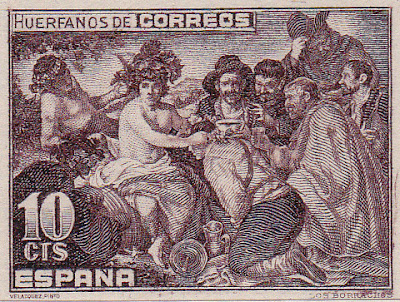 |
| (PHILIPPINES, Scott #46; Edifil #28) USED This stamp displays a portion of the scarce municipal crown cancel "PROV. DE YSABELA, CABAGAN" |
Oval "Municipal Crown" cancels were used in small towns throughout the Philippines between the mid 1860s and mid 1880s. A list of these Philippine towns and provinces that are currently known to have used this type of cancel is available at http://www.nigelgooding.co.uk/Spanish/Crown/Crown.htm . I would be very interested to hear from anyone that might have a municipal crown cancel not included on this list.
Cabagan is a municipality in the province of Isabela, a mostly rural area in the Cagayan Valley in the northeast of Luzon. Before the province was created in 1856, the northern part from Tumauini was part of Cagayan, while the south was part of Nueva Vizcaya.
Cabagan, Isabela, has its share of Spanish colonial churches. San Pablo Church, built in 1624, it is said to be the oldest in the province. It is the only one of the extant Isabela churches that is not made of bricks. It has a very massive belfry reminiscent of those in Ilocos Norte (Paoay and Laoag). Its lofty bell tower of six layers including the circular apex made of adobe is the tallest in the Cagayan Valley. San Pablo, the oldest town of Isabela, was founded by Padre de Sto. Tomas, 210 years before Isabela was made a province.
In the northern part of Isabela, the Tumauini Church or San Matias Church, a National Cultural Treasure and National Historical Landmark, is most known for its round wedding cake belfry. It's arguably the most exquisite example of brick architecture in the Philippines.





























